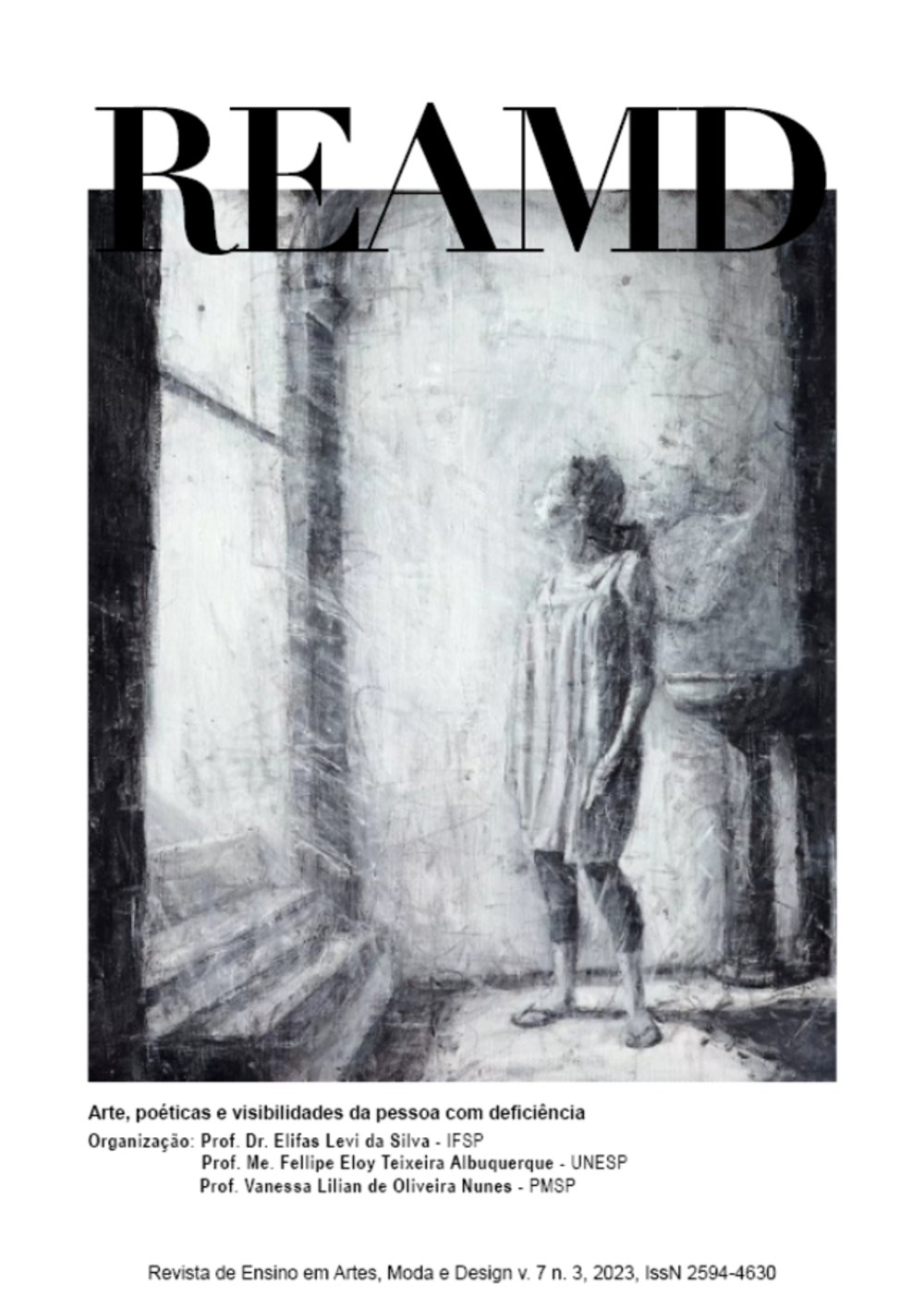3D printing in design: for a future creative experience in Tunisia
DOI:
https://doi.org/10.5965/25944630732023e3369Keywords:
technological innovations, 3D printing, creativity, design, interior spaceAbstract
Architecture is deeply influenced by new technologies, constantly being tested by innovations and trends seeking to anchor and perform environmentally. These lightning-fast technological advances are paving the way for new forms of creativity in interior design. 3D printing, also known as additive manufacturing, is opening the door to smarter, more efficient spatial design. 3D printing technology has already seen success around the world, but the lack of knowledge and awareness of the technology in the construction sector, material characterization methods, and manufacturing questions pose a real problem for architects and interior designers in Tunisia. The questions that arise are the possibility of using the technology in the design of interior spaces, the role that innovation plays today in creating our spaces, and how to think about the intersection between design and 3D printing in the design of our living spaces? The aim of this work is to identify the challenges of creative and sustainable architectural conception in Tunisia through 3D printing, using an empirical approach based on case studies and the analysis of concrete projects. Education on 3D printing will allow us to re-examine this innovative technology, which could bring solutions to the environmental and social challenges related to construction. This paradigm shift will revolutionize our way of designing physical space, architecture, and building in a country where architecture has been influenced by multiple civilizations.
Downloads
References
ALLAIRE, G.; JOUVE, F. Design et formes optimales (III): Optimisation topologique. Images des Mathématiques, [s. l.], p. http://images. math. cnrs. fr/Design-et-formes-optimales-III. html, 2009.
ANDRÉ, J. C. De la fabrication additive à l’impression 3D/4D 1: Des concepts aux réalisations actuelles. [S. l.]: ISTE Group, 2018. 2018.
ARSLAN SELÇUK, S.; SORGUÇ, A. Reconsidering The Role of Biomimesis in Architecture An Holistic Approach for Sustainability. In 2nd international sustainable building symposium—ISBS, [s. l.], p. 382–388, 2015.
BIER, H. Henriette Bier et le laboratoire Hyperbody. Em: IMPRIMER LE MONDE. [S. l.]: Centre Pompidou, 2017. p. 260–261. Disponível em: http://www.editions-hyx.com/fr/imprimer-le-monde-0. Acesso em: 28 fev. 2023.
BLANCHET, M. Industrie 4.0: nouvelle donne industrielle, nouveau modèle économique. Géoéconomie, Parisv. 82, n. 5, p. 37–53, 2016.
BOUFFARON, P. Impression 3D: Les prémisses d’une nouvelle (r) évolution industrielle? Ambassade de France aux Estats-Unis, Washington, USA, [s. l.], 2014.
DEUTSCH, R. Superusers: design technology specialists and the future of practice. [S. l.]: Routledge, 2019. 2019.
EVERETT, H. 14Trees to build largest 3D printed affordable housing project in Kenya. [S. l.: s. n.], 2021. Disponível em: https://3dprintingindustry.com/news/14trees-to-build-largest-3d-printed-affordable-housing-project-in-kenya-200870/. Acesso em: 13 jun. 2023.
GAO, W.; ZHANG, Y.; NAZZETTA, D. C.; RAMANI, K.; CIPRA, R. J. RevoMaker: Enabling multi-directional and functionally-embedded 3D printing using a rotational cuboidal platform. Em: PROCEEDINGS OF THE 28TH ANNUAL ACM SYMPOSIUM ON USER INTERFACE SOFTWARE & TECHNOLOGY, 2015, [s. l.], . Anais [...]. [S. l.: s. n.], 2015. p. 437–446.
HEANEY, D. F. Designing for metal injection molding (MIM). Em: HANDBOOK OF METAL INJECTION MOLDING. [S. l.]: Elsevier, 2019. p. 25–43.
HENSLEY, L. Can a 3D architectural printer be the housing solution we need?. [S. l.: s. n.], 2022. Disponível em: https://www.cpacanada.ca/en/news/pivot-magazine/3d-printed-houses. Acesso em: 13 jun. 2023.
LEBRUNET, H. La disparition de l’architecte : la conception architecturale au prisme des nouvelles technologies et de l’époque contemporaine. 2018. thesis - Dépôt Universitaire de Mémoires Après Soutenance, [s. l.], 2018. Disponível em: Acesso em: 28 fev. 2023.
NEBRIDA, J. Automated Onsite Construction: 3D Printing Technology Versão 4312547. Rochester, NY: [s. n.], 2022. SSRN Scholarly Paper. Disponível em: https://papers.ssrn.com/abstract=4312547. Acesso em: 10 jan. 2023.
OUHSTI, M.; HADDADI, B. E.; BELHOUIDEG, S. Matériaux intelligents par la technologie d’impression 3D: la fabrication intelligente. REVUE DE L’ENTREPRENEURIAT ET DE L’INNOVATION, [s. l.], v. 2, n. 6, 2018. Disponível em: https://revues.imist.ma/index.php/REINNOVA/article/view/13084. Acesso em: 28 fev. 2023.
RAEL, R.; SAN FRATELLO, V. Printing architecture: Innovative recipes for 3D printing. [S. l.]: Chronicle Books, 2018. 2018.
RAYNAUD, D. Contrainte et liberté dans le travail de conception architecturale. Revue française de sociologie, Parisv. 45, n. 2, p. 339–366, 2004.
SWETS, J. A.; DAWES, R. M.; MONAHAN, J. Better decisions through science. Scientific American, [s. l.], v. 283, n. 4, p. 82–87, 2000.
WANG, W. Architecture futuriste : création de l’architecture futuriste à l’ère de la technologie numérique. [s. l.], p. 57, 2017.
Published
How to Cite
Issue
Section
License
Copyright (c) 2023 Malek NOURI

This work is licensed under a Creative Commons Attribution 4.0 International License.
- Authors retain copyright and grant the journal the right of first publication, with work simultaneously licensed under the Creative Commons Attribution 4.0 International License, which allows for:
1. Share — copy and redistribute the material in any medium or format for any purpose, even commercially.
2. Adapt — remix, transform, and build upon the material for any purpose, even commercially.
The licensor cannot revoke these freedoms as long as you follow the license terms.Under the following terms:
1. Attribution — You must give appropriate credit, provide a link to the license, and indicate if changes were made. You may do so in any reasonable manner, but not in any way that suggests the licensor endorses you or your use.
2. No additional restrictions — You may not apply legal terms or technological measures that legally restrict others from doing anything the license permits. -
Plagiarism, in all its forms, constitutes unethical publication behavior and is unacceptable. This magazine uses iThenticate similarity control software.






